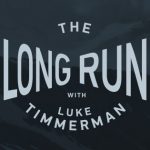T-cell Diagnostic Tests: COVID-19 Pushed Us, and We Can See Where This Leads

Chad Robins, co-founder and CEO, Adaptive Biotechnologies
In late February 2020, when it became clear that COVID-19 was spreading around the world, our senior management team at Adaptive Biotechnologies took a gamble.
We had a hunch that our ability to evaluate T-cell immunity, combined with advanced bioinformatics, could help the scientific community better understand the novel coronavirus.
The entire world, it seemed, was focused on B-cell derived immunity, the antibody response, to SARS-CoV-2. We thought we had something to add. The data we could generate from our immune medicine platform and T-cell technology would capture a more vivid and information-rich picture.
With one phone call to our partners at Microsoft, the decision was made. The work we did together to build a TCR-Antigen Map for many different diseases supplied the tools and technology to take on this challenge. (TR coverage of Adaptive/Microsoft partnership, Jan. 2018.)

Peter Lee, Corporate Vice President,
Microsoft Research & Incubations
Peter Lee, Corporate Vice President, Research and Incubations, immediately offered us resources, including staffing, and brought in other partners like Providence, a health system with 51 hospitals, to collect patient samples. Deals were being made with phone calls and handshakes. Deals took shape in days, not months. I had never seen anything like it.
From the outset, we agreed with our partners on the importance of data sharing. No one company or institution would be able to make the pandemic disappear. We made the data available freely via an open access portal, ImmuneCODE™.
Rapid Progress Through Collaboration
More than 20 academic and industry collaborators from 7 countries joined us. While many vaccine manufacturers received billions to accelerate research of novel platform technology, we moved forward on our own without government grants or other government support. Organizations from around the world were offering patient samples, including our cancer research partners at Hospital 12 de Octubre, i+12/CNIO in Madrid, Spain, as well as the University of Padua and Ospedale San Raffaele in Italy.
We started with a few basic questions.
First, we wanted to know whether it was possible to detect a past COVID-19 infection from T cells in the blood. Yes or No?
T cells are the first responders of the adaptive immune system and support the antibody response. These cells have specialized receptors which must be extraordinarily diverse to recognize one or a small number of the millions of disease specific antigens to which our bodies are continuously exposed.
When your body encounters a pathogen, T cells arise first and often last longer than antibodies.
Why is this important?
Antibodies tend to surge in the presence of an infection. Their concentrations diminish when the infection passes. That’s normal. We also know that although antibodies may be harder to detect a few months after the initial infection, that doesn’t necessarily mean immunity has been lost. T cells may have been primed, and may still be hanging around in the blood.
It’s up to us to see if the T cells are still there, and if they are still capable of mounting an immune response in case there’s another encounter with SARS-CoV-2.
Testing T-cell levels in response to COVID-19 may therefore be an important complement to antibody testing to identify recent or prior infections. One of our collaborators, a team led by Dan Barouch at the Center for Virology and Vaccine Research at Beth Israel Deaconess Medical Center in Boston, looked at blood samples from 20 people vaccinated with the Johnson & Johnson COVID-19 vaccine and found that while antibody concentrations dropped against certain variants of concern in the 71 days after vaccination, the T cell immunity was largely preserved.
This encouraging finding was published June 9 in Nature.
To understand how the immune system responds to a disease like SARS-CoV-2, we need to translate the diverse genetic code of T-cell receptors into data that can be analyzed both at the individual level and across entire populations.
Our partners gather the samples, we generate the sequence data from their diverse T-cell receptors, and the raw data gets uploaded into cloud computing databases. Working with Microsoft, we applied their advanced AI, cloud computing and machine learning technologies to comb through this massive data set, effectively creating a “map” of these immune cells to most diseases.
Our labs were running 24/7 with reduced capacity, taking every precaution to safeguard our employees and samples. The pressure was intense. We needed to keep piling on to that mountain of data continuously, while also figuring out faster and smarter ways to extract meaningful insights to the public health and biopharma communities.
With 5,500 blood samples from Asia, Europe and the U.S. — and only a small team at our central lab in Seattle — we knew we needed more help. It took nearly 8 months to receive all the blood samples. As things started to open up and patients were returning to the clinic for testing, we had to work even harder to process the samples.
We continued to expand our industry collaborations, initially with Labcorp, the biggest diagnostic company in the U.S., and Illumina, the market leader in DNA sequencing.
A New Tool In Our Toolkit / Understanding Immunity and Variants
Fast forward a year to the recent FDA Emergency Use Authorization for T-Detect™ COVID, the first-ever T-cell test for individuals that can detect whether a person has had a recent or past COVID-19 infection. Based on our best understanding of the immunology, we believe this test can tell whether one has been exposed to SARS-CoV-2 months after an original diagnosis.
We can do it with high accuracy, outperforming leading antibody tests in real world studies.
The entire process, including order authorization by a virtual provider, can be completed online except for the blood draw. Samples get collected at a Labcorp facility or by a mobile phlebotomist, shipped to our labs in Seattle, and we provide a report back within 7-10 days. It costs under $300 with a blood draw and virtual provider fee. It isn’t covered by health insurance, but it is covered by healthcare and flexible spending accounts.
At this stage in the pandemic — despite widespread antibody testing and several vaccines — there are still a lot of questions about COVID-19. T cells may hold some of the answers.
For example, they may offer the ability to detect past infections for a much longer period than traditional tests. They may allow us to diagnose Long COVID (patients who have not fully recovered weeks or even months after first experiencing symptoms). It’s theoretically possible for us to draw a quantifiable connection between lingering immune perturbations, potential signs of autoimmunity, and symptoms of Long COVID. That’s something else investigators are looking into.
Patients who use T-Detect COVID have the option to opt-in to ongoing research. This will accelerate our understanding of variants, who is at more risk of getting the virus, who is protected, and the effectiveness of vaccines.
In the future, we may be able to go beyond a yes/no answer. Physicians and patients may be able to identify the source of their immune response either from natural infection or from a vaccine. This is especially important as more of the population gets vaccinated and as new variants appear which may be increasingly capable of escaping natural immunity, or vaccine-induced immunity.
Making the Impossible Possible
One of the unique benefits of Adaptive’s T-cell testing approach is that it can be done at scale, something that was impossible just a few years ago. Historically, to test T cells, you would need a blood sample with live T cells, which have a shelf life of four to six hours. It would be impractical, if not impossible, to test hundreds of thousands of samples in that time frame.
We look at DNA samples taken from hundreds of thousands of T cells in a blood sample to find the unique signature of COVID. The blood samples can be stored at room temperature for up to 5 days or be frozen. The stability of DNA allows us to extract the information needed days or weeks after the sample is collected. This opens the door for the kind of massive T cell data sets that are needed to provide clear answers that go beyond just a few interesting anecdotes.
A Paradigm Shift In Diagnosing a Broad Range of Diseases
One of the exciting things about the T-Detect COVID test is that it provides proof of concept that T-cell testing is effective in diagnosing disease. We can build on this and apply it to many other disease areas, beyond SARS-CoV-2 and infectious diseases.
Imagine if you had a T-cell test that could tell the difference between diseases with similar symptoms like Lyme disease and multiple sclerosis? Or a T-cell test that could detect many different diseases across multiple therapeutic areas with a single vial of blood, eliminating the diagnostic odyssey that many patients face as they spend years trying to get the correct diagnosis for their symptoms?
This represents a paradigm shift in how we diagnose, and ultimately treat, many different illnesses based on how the immune system naturally does this. We call this Immune Medicine.
That is the promise T-cell-based testing holds. We, along with our partners, are up to the challenge. We can say that with even greater confidence today than a year ago because we’ve been compelled to push the limits.
Many more exquisitely informative diagnostics are going to come from this ultimate stress test. It’s something we can look forward to on the other side.




